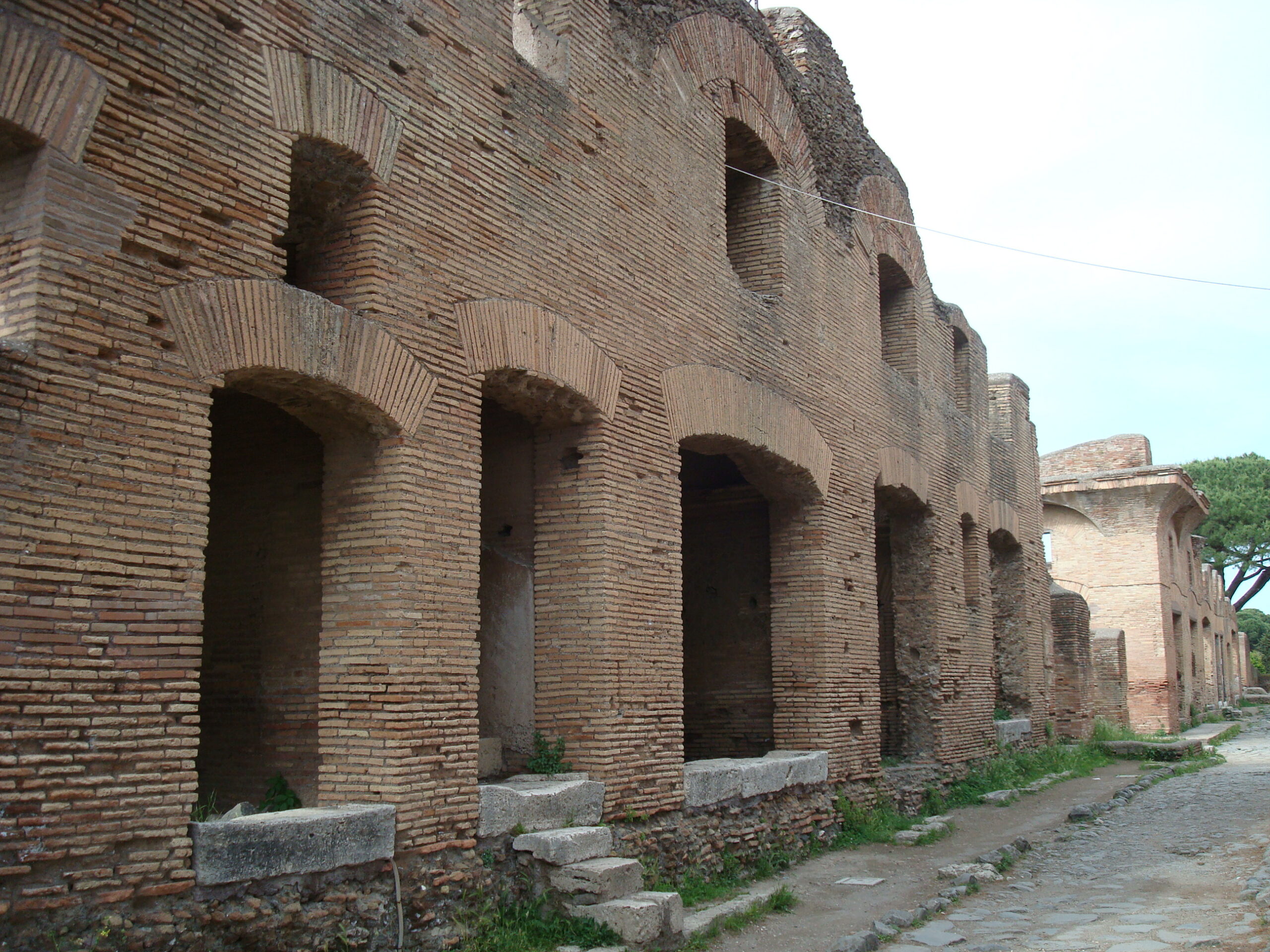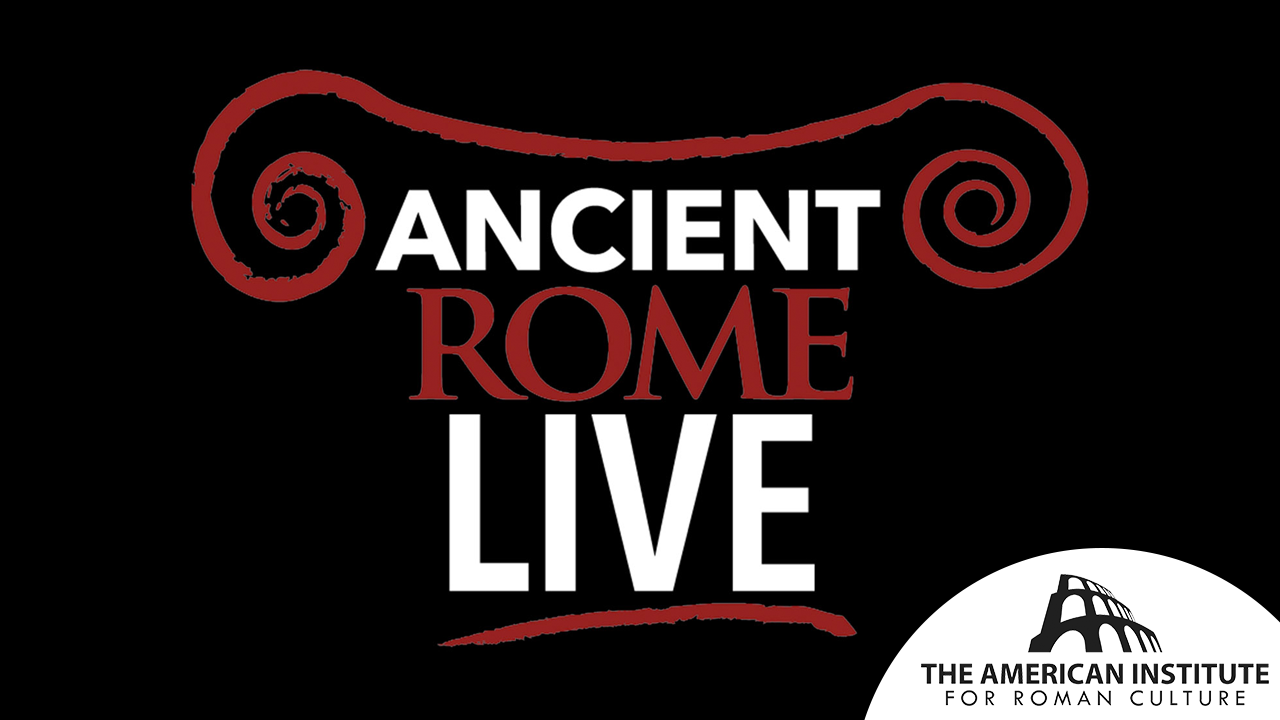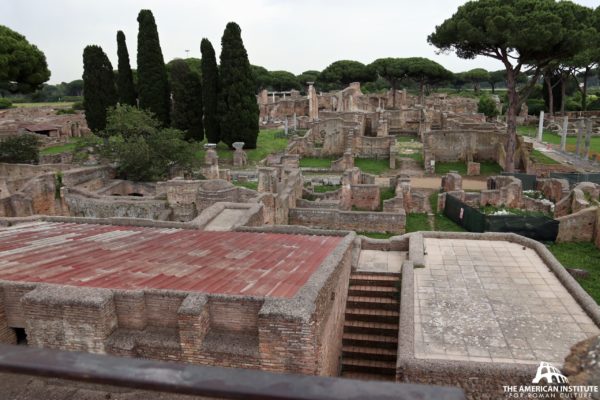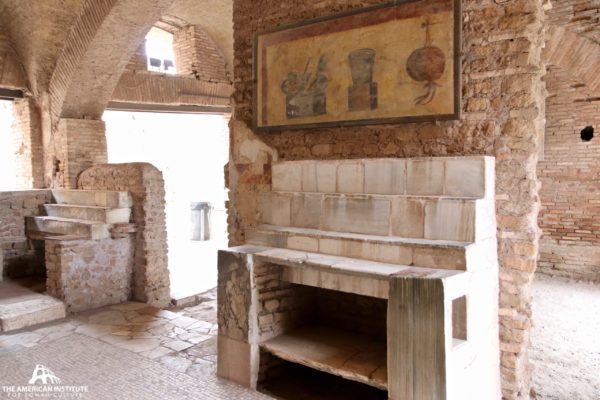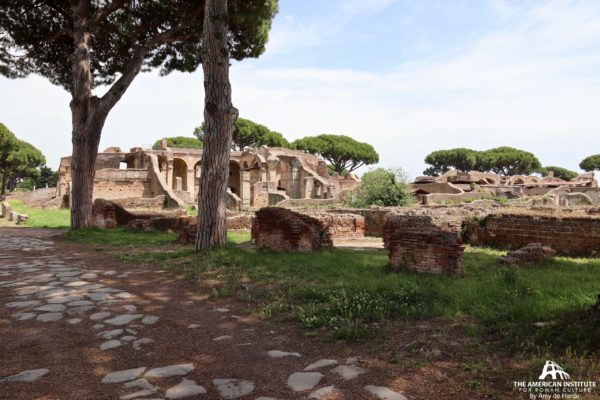Watch our video overview:
Perhaps one of the most impressive qualities of Ancient Roman constructions is their incredible longevity. These historical buildings have endured centuries of deterioration and faced many natural disasters such as fires, floods, earthquakes, and others. Even though they are not the same as they used to be, they still stand today, showing the impeccable engineering and architecture behind them.
The city of Ostia Antica peaked during the reign of Emperors Hadrian and Trajan, in the 1st century AD, reaching up to 50.000 inhabitants and the most developed phase of construction, stretching over around 150 acres. Following the gradual decline of Ostia’s commercial activities, the city was abandoned by the 6th century. All the buildings left behind were covered in debris and sand dunes until they were all underground, which was very helpful to the long-term preservation of the city.
The archeological site in the grandeur that we know today started to be slowly excavated in the 19th century, under the authority of the pope. In the 1930s, the excavations were intensified and accelerated under the fascist regime. Over the past 50 years, there have been further excavations done to better understand and bring to light the incredible history of Ostia Antica.
The materials used in the constructions in Ostia Antica were high-quality and all carefully crafted by the people. The mostly used materials were Tuff, a rock composed of compacted volcanic ash that was found easily around Rome; cement mixtures, clay bricks; wood and various types of stone and marble. The combination of these materials made the buildings durable and strong.
Another element that supported this characteristic was the architectonic solution of incrementing arches on the walls. Ancient Romans appropriated arches into their architecture around the 3rd century BC and perfected their use and application over the centuries. The arches served to distribute the weight of the walls in a balanced way, dissipating the tension, and allowing for higher floors and thicker walls to be safely constructed. Some arches, the most obvious ones, were open passageways. There were other arches embedded into solid walls for the sole purpose of fortifying the building.
There were many people involved in Ancient Roman constructions, at every step of the way. From molding the clay to make every individual brick, to harvesting materials from nature, to erecting wall by wall. Free Roman citizens were employed in this labor, as well as slaves for the more wearing work. The remains of these constructions are already impressive, but nowadays we can only imagine what they looked like in their heyday, with all the decorations and finishing touches that were lost over the centuries.
References
- “Recent Excavations in Rome” by Orazio Marucchi https://www.journals.uchicago.edu/doi/10.2307/495863
- “Rome: An Oxford archaeological guide” by Amanda Claridge, with contributions by Judith Toms and Tony Cubberley.https://doi.org/10.1017/S0003581511000230
- “A New Topographical Dictionary of Ancient Rome.” by L. Richardson, Jr. https://doi.org/10.2307/301066
- “Roman Building: Materials and Techniques by J.P. Adam” reviewed by Roger B. Ulrich https://doi.org/10.2307/530199
Explore further:
This content is brought to you by The American Institute for Roman Culture, a 501(C)3 US Non-Profit Organization.
Please support our mission to aid learning and understanding of ancient Rome through free-to-access content by donating today.
Cite This Page
Cite this page as: Darius Arya, The American Institute for Roman Culture, “Ostia, Italy (Ostia Antica) – Chapter 7: Roman Construction” Ancient Rome Live. Last modified 08/28/2020. https://ancientromelive.org/ostia-italy-ostia-antica-chapter-7-roman-construction/
License
Created by The American Institute of Roman Culture, published on 08/28/2020 under the following license: Creative Commons: Attribution-NonCommercial-ShareAlike. This license lets others remix, tweak, and build upon this content non-commercially, as long as they credit the author and license their new creations under the identical terms. Please note that content linked from this page may have different licensing terms.

